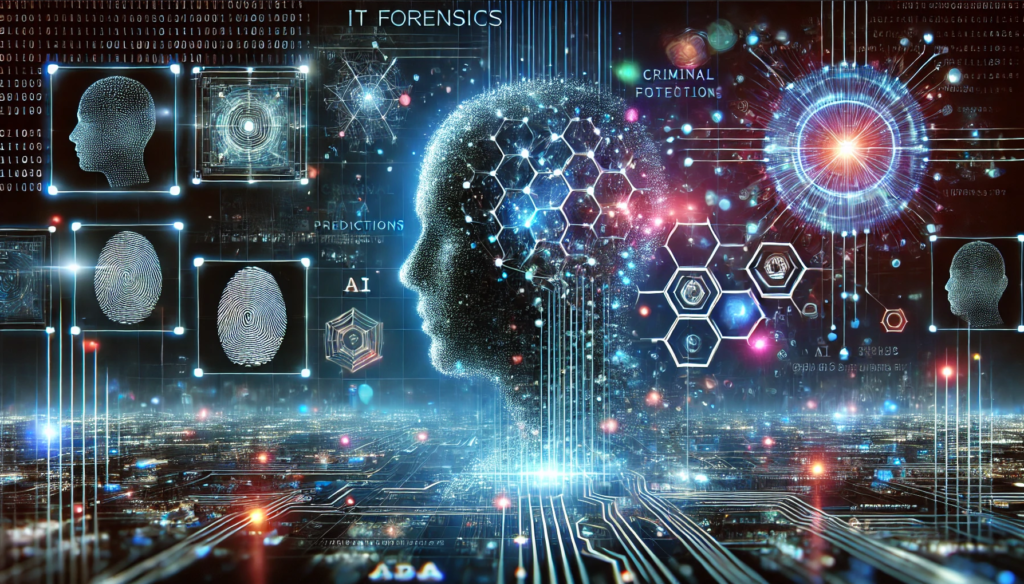In recent years, the field of criminology and law enforcement has seen a significant shift in how crime patterns are predicted and analyzed. The advent of artificial intelligence (AI) has revolutionized this process, offering more efficient and accurate methods compared to traditional approaches. This article examines how AI is transforming crime prediction and its advantages over older techniques.
Traditional Methods of Crime Pattern Prediction
Historically, law enforcement agencies have relied on several conventional methods to predict crime patterns:
- Hot Spot Analysis: This involves identifying areas with high concentrations of criminal activity based on historical data.
- Repeat Victimization Studies: Analyzing patterns of repeated crimes against the same victims or locations.
- Criminal Profiling: Creating profiles of potential offenders based on past crime data and behavioral analysis.
- Statistical Modeling: Using regression analysis and other statistical tools to identify correlations between various factors and crime rates.
While these methods have been valuable, they often suffer from limitations such as human bias, inability to process vast amounts of data quickly, and difficulty in identifying complex, non-linear relationships between variables.
AI-Powered Crime Prediction
Artificial Intelligence, particularly machine learning and deep learning algorithms, offers several advantages in predicting crime patterns:
- Big Data Processing: AI can analyze enormous datasets, including crime reports, demographic information, economic indicators, and even social media data, at speeds impossible for human analysts.
- Pattern Recognition: Machine learning algorithms excel at identifying subtle patterns and correlations that might be invisible to human observers.
- Real-time Analysis: AI systems can continuously update their predictions as new data becomes available, providing law enforcement with up-to-the-minute insights.
- Multivariate Analysis: AI can simultaneously consider a vast array of variables and their complex interactions, leading to more nuanced predictions.
- Reduction of Human Bias: While not entirely free from bias, AI systems can be designed to minimize the impact of personal prejudices that might influence human analysts.
Comparative Advantages of AI in Crime Prediction
- Accuracy: Studies have shown that AI-based predictive policing models can be significantly more accurate than traditional methods. For instance, a study by the University of California, Los Angeles found that an AI algorithm was able to predict crime hotspots twice as accurately as experienced crime analysts.
- Efficiency: AI systems can process and analyze data much faster than human analysts, allowing for rapid deployment of resources in response to predicted crime patterns.
- Scalability: Once developed, AI models can be easily scaled to cover larger geographic areas or incorporate new data sources without a proportional increase in human resources.
- Adaptability: Machine learning models can quickly adapt to changing crime patterns, whereas traditional methods may lag in recognizing emerging trends.
- Cost-effectiveness: While initial implementation costs can be high, AI systems can potentially reduce long-term expenses associated with crime analysis and prevention.
Ethical Considerations and Challenges
Despite its advantages, the use of AI in crime prediction is not without controversy:
- Data Privacy: The extensive data collection required for AI analysis raises concerns about individual privacy rights.
- Algorithmic Bias: If not properly designed and monitored, AI systems can perpetuate or even amplify existing biases in the criminal justice system.
- Transparency: The “black box” nature of some AI algorithms can make it difficult to understand and explain their decision-making processes, which is crucial in legal contexts.
- Over-reliance on Technology: There’s a risk that law enforcement may become overly dependent on AI predictions, potentially neglecting human judgment and community engagement.
Artificial Intelligence represents a significant leap forward in the ability to predict and analyze crime patterns. Its capacity to process vast amounts of data, identify complex patterns, and provide real-time insights offers clear advantages over traditional methods. However, the implementation of AI in this sensitive area must be approached with caution, ensuring that ethical considerations are addressed and that these tools augment, rather than replace, human expertise in law enforcement.
As the technology continues to evolve, it is crucial for legal and criminal justice professionals to stay informed about both the potential and the limitations of AI in crime prediction. By leveraging these advanced tools responsibly, we can work towards more effective, efficient, and equitable law enforcement strategies.
Philip Matusiak brings over 20 years of experience in IT Forensics to this discussion. His extensive background includes providing expert witness testimony in both criminal and civil courts, making him a valuable voice in the intersection of technology and law enforcement. His insight draw from a deep well of practical experience in applying technological solutions to real-world criminal investigations and legal proceedings.




